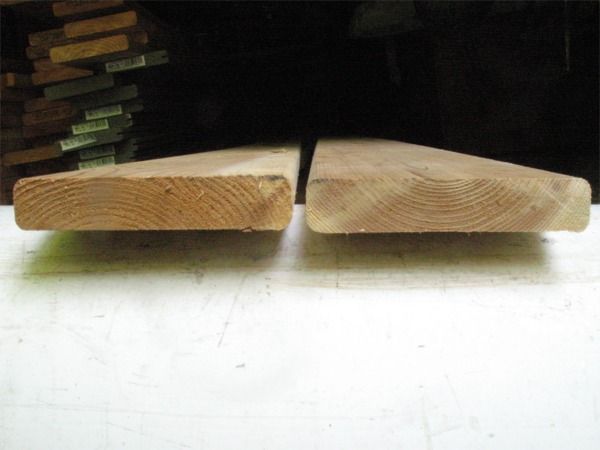
So when you install pressure treated, flat sawn, wood decking, do you face the bark side up (left in photo) or bark side down (right in photo)? Ask ten people and half will likely say ‘bark-side-up,’ a few will say ‘bark-side-down’ and the rest will shrug their shoulders. For some direction, we can turn to wood scientists – they actually study stuff like this.
But who cares and what do we hope to gain by orienting deck boards a particular way? The objectives for orienting the decking bark side up or down are to minimize cupping (which leaves raised edges for feet to catch on), reduce splitting (AKA ‘checking’), diminish the chance for rot and have fewer splinters.
A number of years ago I looked at several old decks with pressure treated southern yellow pine decking to see how the boards were behaving. On casual assessment it appeared that it didn’t matter much which way the boards were laid. Just as many boards oriented bark side up were cupped, curled, checking, beginning to rot and splintering as those oriented bark side down.
Since then, I’ve read several scholarly pieces on the issue; most were intended for wood science peers and so technical I could barely make heads or tails out of them. Two good articles though break down the science behind the bark side up or bark side down alternatives and make it easier for us to understand what’s going on inside the wood and focus on what really matters.
Wood Myths: Facts and Fictions About Wood by U Mass Amherst professor, Paul Fisette covers the deck board orientation issue in Myth 9 of his list. His advice: “… pick the best looking surface and install the decking best-face up. Securely fasten the deck boards and apply an annual coating of water repellent.”
In 1995 researchers in Wood Surface Chemistry at the USDA Forest Service, Forest Products Lab, R.Sam Williams and Mark Knaebe drafted “The Bark-Side / Pith-Side Debate” Most of the points they make about wood behavior supports orienting deck boards “bark-side up” however at the end they state “These factors, although important, can be overridden by a third factor-the quality of the pith side compared to that of the bark side. If the pith side is clearly better, place this side up.”
Then there are positions that the wood industry takes. The Southern Forest Products Asso. advises bark side up as does Georgia Pacific installation information for pressure treated lumber.
Given the points that Williams and Knaebe make and the industry position, I now orient decking bark side up provided the face is as good. When the bark side has a poor appearance, I take Paul Fisette’s advice and flip the board over throwing caution to the wind.
Fine Homebuilding Recommended Products
Fine Homebuilding receives a commission for items purchased through links on this site, including Amazon Associates and other affiliate advertising programs.

Reliable Crimp Connectors

8067 All-Weather Flashing Tape

Handy Heat Gun
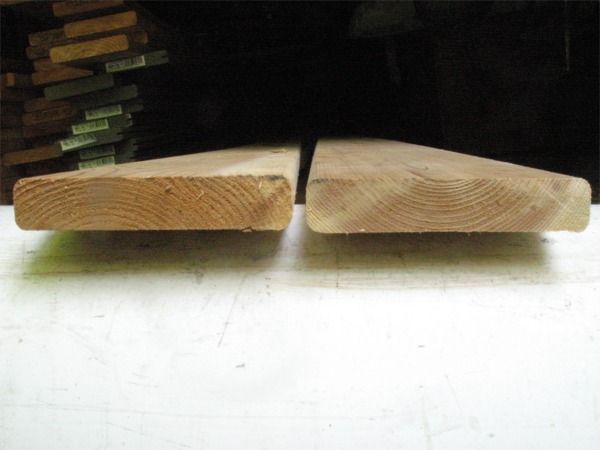
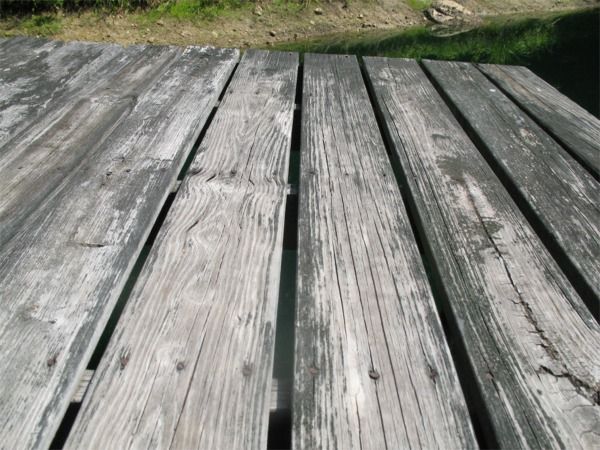
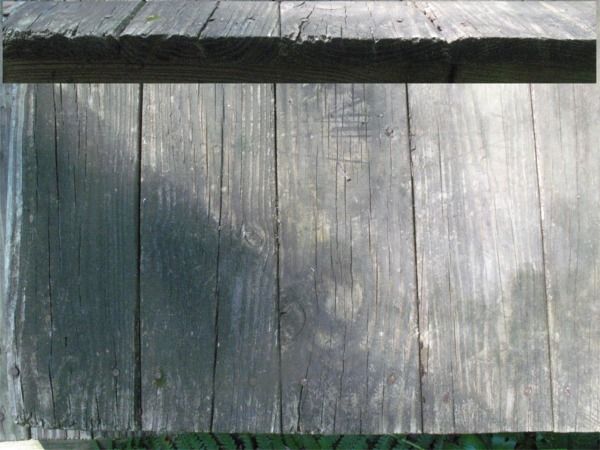

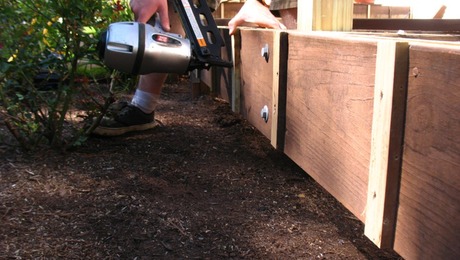
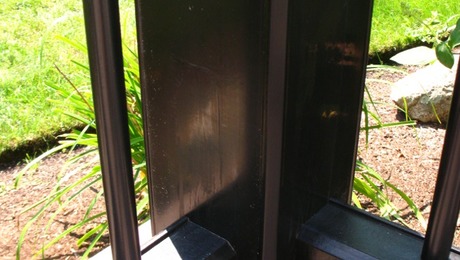
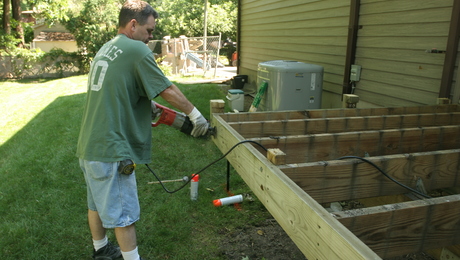





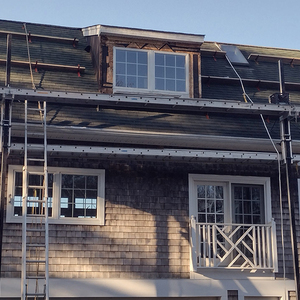

















View Comments
I agree with Mike . I've always been a barkside up guy. My experiences, I have herd a bunch of different things like for instance, in woodworking when your making a table top "they" say to alternate the rings to keep the top flat, kinda makes sense. In decking "old school" BPT [before pressure treated} remember the various shades of red paint/stain 2x6 {spf} decks, back when everything was hand nailed with a few Nova Scotia smiles here and there . My boss would say "just nail the outsides of the boards" or "make sure you nail the middle so it don't cup" or whatever. Only a small percentage of people would actually paint /stain the deck boards BEFORE the deck was built even then, that only lasted a few years. When it was refinished, only the top got the sealer. Here's my two cents worth. whether you put the rings down or up it doesn't matter, just like Mike reported, whatever looks good, if you remember to back prime or seal all the better. The problem I see is when the sealer /prime has broken down or weathered, the undeneath side of the deck never gets any sun , collects the moisture from the ground,framing, etc. {provided you can't climb up or crawl under to reseal} it's going to want to swell and the top side is sealed and somewhat stable, depending on the quality of the sealer or paint, something got to move, hence you have curling and or cupping. The samethimg goes for a tabletop inside your house the top is finished at the factory or factory simulated by you, the bottom is not, you will have more seasonal movement than you would if both sides were finished. Wood is wood. It's a living thing ,it's going to move
I agree with the idea that it is moisture from underneath that causes most cupping. The rest is probably due to trees that are grown very fast & cut relatively young. The deckboards get wet on the top & bottom, & stay wet on the bottom longer & hold a higher relative moisture content on the bottom. Just wet a new deckboard & set it on a hard surface, it'll cup whether oith of bark side is up.
Definitely agree.
Been a "bark-side up" man forever. When I was working as a carpenter's helper on my first deck I was taught this. The carpenter I worked with always gave me a reason for doing things his way/the right way (same thing in his mind). He said that if the boards cup badly, the raised centers won't be as much of a trip hazard as raised edges.
But I've left the orthodox religion of his teaching behind over the years. A deck sure looks better with the occasional bark-side-up to hide a wane or such! And that's how customers judge the work- visuals.
I'm no professional carpenter by a long shot, although I've done all the carpentry work around our place for years. I built a deck out of pressure treated next to our garage several years ago and just for grins I bought a 'deck book' at the local big box store. The instructions there said to place them bark side down which I thought wasn't right. I did it anyway, and now all the boards are cupped and hold some water after a rain. Not real bad, but I wish I had done it the way it looked right to me.
Always, bark side up on decking, the boards grain dictates the predisposition to cupping/curling. An abhorrent knot can skew this tendency, so you are better off to stay away from knotty boards. True, when making a table, you alternate the boards, unless of course it's a picnic table, then it's BSU. As for best looking side, I always hand pick my lumber, so it stays at the supplier if it doesn't look good to start with.
What's your take on waxing the ends of boards to keep them from splitting?
I agree with Chunkmonk's reply that, "wood is wood" however, not all wood is the same wood, especially when using it outdoors. How Pressure Treated wood ever became a deck grade wood is a mystery to me. It is not dimentionally stable and will cup no matter what you do to it. BSU or down it moves and because it is all second growth with very coarse grain the movement can be huge. When the flat grain face of treated wood checks a crack developes that allows water,ICE,pollen,dust and dirt to accumulate in an area that is not treated. This is how nature breaks down wood. This is why you see treated wood that has rotted, it's because it has mechanically degraded.
The best path is to choose the correct wood for the application. When it comes to decks the Natural and most durable choice is Western Red Cedar. Cedar being dimentionally stable & beautiful accepts all stains and is naturally rot resistant. Considered by all in the trade to be the "Greenist" Deck building material.
Cedar has a proven history of performance. I have observed ten year old Cedar decks with Bark side up & Down. When compared it is easy to see that the only decision to be made is what face looks the best. Natures most beautiful and durable fiber, Western Red Cedar, will always be my choice. I have learned, not all woods are created equal.
End Sealing: Wax or otherwise helps resist checking / end splitting. It won't stop checking on pressure treated wood but helps. On the exotic hardwood decks I've done, end sealing seems to stop most all checking. Only places I've seen checking on hardwood decking that has received end sealing treatment is miter cuts.
Western red cedar - One of my favorites as well. Provided of course that homeowners understand how it behaves (graying out, staining, soft nature). I don't know that 'all in the trade' consider it the 'greenest' but it has its green points.
Compression shrinkage
The top side is exposed to more drastic wet and dry conditions so compression shrinkage becomes the dominant force cupping the wood.
eg a dry piece has water on the surface for 2 days. The outermost fibers try to expand to their maximum. (at around 30% moisture content) but the underlying board does not allow the surface layer to expand. The surface layer is effectively compressed. Then the sun comes out and dries it out. The top layer now shrinks, but to a slightly smaller dimension as it was compressed (think crushed)(and restrainded from shinking by the underlying fibers). Repeat many times and now the top layer (1/4" to 1/2" or so) is smaller and cups the board. This also causes the checking as there is no longer 6" of wood to cover the 6" wide board.
This process is fairly drastic and overrides a flatsaw boards natural cupping towards the bark side. (think rings straightening out).
Boards will alway cup to the weathered side because of this.
Glen
All the Bark or pith side up is rather beside the point when walking around with your workboots on.
Ask your self this: "If I was barefoot and running around the deck, which side would I want coming up toward my bare feet - the reinforced center section of a pith center, or the pointy but weak outer sections of the bark side?"
A pith center cupping up will require stitches, a bark edge would only require tweezers.
A good illustration of how a cut of wood will act can be found in FAA Advisory Circular AC 43.13-1B. FIGURE 1-1. Relative shrinkage of wood members due to drying.
http://rgl.faa.gov/Regulatory_and_Guidance_Library/rgAdvisoryCircular.nsf/0/99C827DB9BAAC81B86256B4500596C4E?OpenDocument
Given a choice I'd go bark side up.
That said part of the problem is all the center cut boards that could go either way.
Theres' no clear option. I've see them all cup
I am in a unique position.. I not only build decks but I maintain thousands of decks built by just as many people. This has given me the opportunity to see a lot of mistakes made by a lot of people and learn from them. 50% of my coatings business is fixing other peoples mistakes.
I have been washing and sealing decks for 18 years. At one point we had 22 guys full time and sealed over 1 million sq ft of decking surface per season (including rails, lattice, privacy wall etc.) This is what is some of what I have learned actually seeing decks go through there entire life span.. Not just decks I built but from hundreds of different builders and people who thought they were builders.
I doesn’t matter what side you put up if you don’t seal the deck consistently with the "right" sealer it will come apart. Pine decks that have boards triple nailed fair far better than two. Ring shanks are better than standard screws for several reasons. If you seal the underside of a deck it will cup. The reason for this is that after the surface coating wears the wood absorbs more water and the sealer under the board holds it in and then the board only dries from the top. So the top surface shrinks dry quicker and more often than the bottom in doing so it curls the boards. That’s just a little of what I have found out sealing way too many decks. If anyone has questions feel free to email me. Sean at TheDeckMedic.com
Most of our decks and pergolas are pre-finished... all 6 sides.
Orientation doesn't matter when the materials are kiln dried to start with and sealed. It won't absorb moisture.. it won't expand and contract... it won't tear stain due to expansion.
Keep stain on it and the boards don't cup... ever.
photo at http://www.decks-fences.blogspot.com
ps. I also prefer nails to screws because screws often break if you try to set them deeper to refinish a pressure treated deck.
Richard Jagels did a column in wooden boat magazine some time ago on wood cupping and shelling in which he quoted the "Wood Handbook" and Lazlett's "Timber and trees". The upshot was that flat sawn woods tangential shrinkage is such that bark side up will most naturally cup,(not desirable)and bark side down will most naturally create shelling, producing those wicked knife like flat splinters. (even less desirable) So get out the sealer!
If your deck boards are plainsawn, they will "cup" alot. Bark side up, they will "cup" and form a concave trough that will hold water. Bark side down, they will cup to form a convex shape that will shed water more easily. The problem with that is the pith side of the board can delaminate the annual rings of wood and cause a real tripping hazard, as well as a splintering hazard. An old school carpenter once told me the outside of the tree should face the weather: bark side up. I have designed and constructed many decks, and have taken note of the advantages and disadvantages. I always place bark side up and when the decks have been weathered, I use a large powerful rotary floor sander to sand the deck to a level and smooth consistency. This method is excellent, but really requires the fasteners to be installed from below, Quartersawn boards will be much more appropriate to avoid these difficulties, but should also be fastened from underneath to avoid the decay of weather.
Cedarist is spot on.
Pressure treated decking is junk. Around here it is mostly yellow pine but not of the grade of years ago.
Years ago you could get all heart wood, tight grain clear yellow pine I have seen old trim boards (painted of course) made from this that outlasted newer pressure treated boards.
The key is in the grain and how it was milled. Many old trim was rift sawn like siding and although it is the same species of tree you would not recognize the grain of those boards with anything in a mill yard today. (unless it was reclaimed old growth yellow pine)
I just got done building a deck for a customer that insisted on buying his own decking and on using Pressure treated yellow pine. It look great now but I told him he gets no warranty from me on the materials. I stated when the boards cup and split don't call me unless he is prepared to pay me to replace them.
And I stress WHEN not IF the cup.
No matter how much you seal or how you nail it down it will cup. Most of the boards were cupped before we even installed them and many already had checks and splits I tried to cull out the worst but he was cheap and would not let me reject many except the very worst ones.
in 1985 at the college i went to, the woodworking professor taught that boards cup due to the configuration of the annular rings. Longer rings shrink more, pulling up the edges.
Perhaps risking an oversimplified answer to all of this: use composite decking. The money spent in staining, sealing, and sanding will be worth it in the end.
Tell the decking industry you want the decking quarter sawn. Then add a dip in hot linseed oil and paraffin to the treatment before it goes down,that should make for a long lasting deck! Anytime wood is exposed to sunlight or moisture for an extended
length of time it will fail so give it a roof, sit back and enjoy the shade!
I'm looking at this in mid-2018, but have just put down a new deck surface on an existing structure. The joists are on 24" centers, I know, I know, 16" OC is better, but I didn't build it and it's sound. I used pressure treated Douglas fir, 2x6x144. The wood came in wrapped skids that was very wet from the plant. All well and good: I put it down with Camo system hidden fasteners through the shoulders of the boards, 1/16" gap. It's now dried to a 1/4 gap and about 25% of the boards are cupping UP. I knew that the rings should have been concave side down, but most boards had a good and a bad side. Hence, I put the good side up. As I don't want to face-screw, I think the best option at this point is to let it fully cure, rent a floor sander, sand it level and re-treat. After all, I have 1 5/8" to work with. At the most I'll be taking 1/4" off an edge...